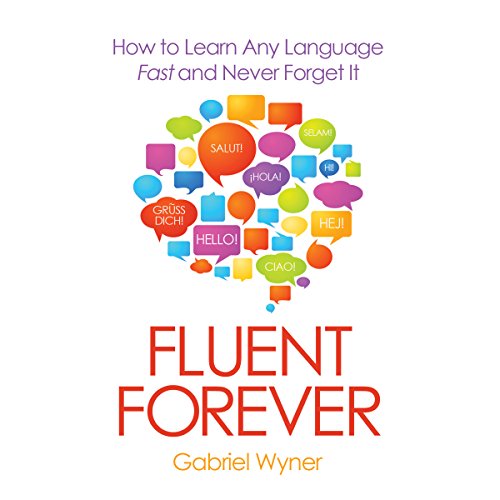If you’re like me, you love learning new languages. You enjoy the challenge of mastering a different grammar, the thrill of discovering new words, and the satisfaction of communicating with people from other cultures. You’re seeking the thrill of being fluent forever in your chosen tongues.
But you also know how hard it can be to learn a language well. You’ve probably tried many methods and resources, but none of them seem to work as well as you hoped. You still struggle with pronunciation, vocabulary, and fluency. You wonder if there’s a better way to learn languages faster and more effectively.
Well, there is. And it’s called Fluent Forever.
Fluent Forever is a book by Gabriel Wyner, a polyglot who speaks six languages fluently. He learned them in the past few years, using simple techniques and free online tools that he shares in his book.
He claims that his method can help anyone learn any language in months, not years. He also promises that his method will make you remember everything you learn, and never forget it. Sounds too good to be true, right? Well, I decided to give it a try and see for myself.
Learning How To Learn
The book is divided into four parts. The first part explains the science behind his method, based on how our brains learn and remember information. The author first shows how traditional methods of language learning, such as grammar rules, translation, and rote memorisation, are inefficient and ineffective. He argues that the best way to learn a language is to train your ears, eyes, and mouth to perceive and produce the sounds, spelling, and structure of the language. Wyner also emphasises the importance of using spaced repetition systems (SRS), such as Anki, to review what you learn in a smart and optimal way – and you just know I’m a fan of Anki, friends.
The second part of the book guides you through the steps of his method, starting from the basics of pronunciation and spelling. He teaches you how to use online resources, such as Forvo and Wiktionary, to create your own flashcards with audio and images. He also shows you how to use minimal pairs, tongue twisters, and shadowing exercises to improve your accent and listening skills. He then moves on to teaching you how to build your vocabulary and grammar using word lists, frequency dictionaries, example sentences, and cloze deletion cards. He also gives you tips on how to avoid translation and think in your target language.
The third part of the book provides you with additional resources and advice on how to continue your language learning journey. Wyner suggests some websites, books, podcasts, videos, and apps that you can use to immerse yourself in the language and culture. He also shares some strategies on how to find and practice with native speakers online or offline. He also addresses some common challenges and questions that language learners face, such as motivation, plateaus, interference, and polyglottery.
Getting to the Specifics
The fourth part of the book is a collection of appendices that contain useful information and tools for specific languages. He covers 13 languages in total: Arabic, Chinese (Mandarin), French, German, Italian, Japanese, Korean, Portuguese (Brazilian), Russian, Spanish (Latin American), Swedish, Turkish, and English (for non-native speakers). He provides you with links to pronunciation guides, word lists, grammar summaries, dictionaries, media sources, and more for each language.
I have to say that I was impressed by the book. It was well-written, well-researched, and well-organised. It was clear, concise, and practical. Wyner filled it with examples, illustrations, and anecdotes. It was engaging, entertaining, and inspiring. And ultimately, it was not just a book about language learning; it was a book about learning how to learn.
My Experience
I followed his method for a few months with a language that I had always wanted to learn: Swedish. And I can honestly say that it worked wonders for me. Truly, I learned more in those months than I had in years with other methods.
I improved my pronunciation, spelling, vocabulary, and grammar. I became more confident and fluent in speaking and writing. Finally, I was able to understand and enjoy various media in Swedish. I even made some new Swedish-speaking friends online on the back of his encouragement. I felt like I had achieved a level of fluency that I had never reached before with any other language.
Of course, it’s no quick-fix. That, of course, is far too good to be true. His system still took a lot of time, effort, and dedication. It required me to be consistent, curious, and creative. It challenged me to overcome my fears, doubts, and mistakes. But it was also fun, rewarding, and satisfying. It made me appreciate the beauty and diversity of languages. It made me realise that learning a language is not just a skill; it’s a lifestyle.
So, if you’re looking for a book that can help you learn any language in a fast and effective way, I highly recommend Fluent Forever. It’s not just a book; it’s a guide, a tool, and a learning mentor. It will change the way you think about language learning.
And it might just make you fluent forever.

